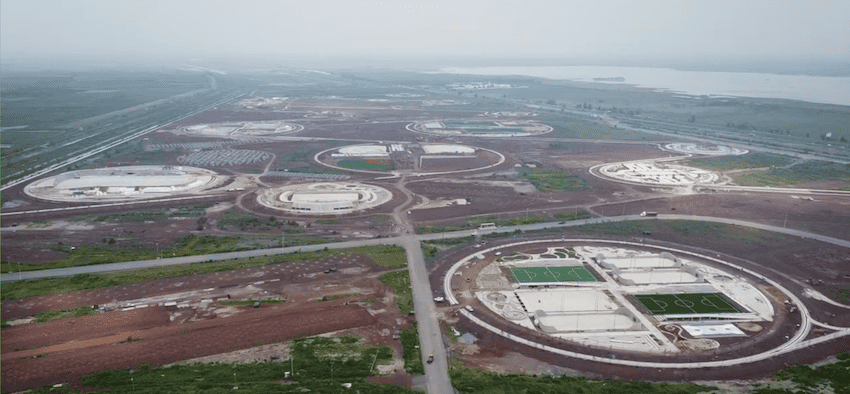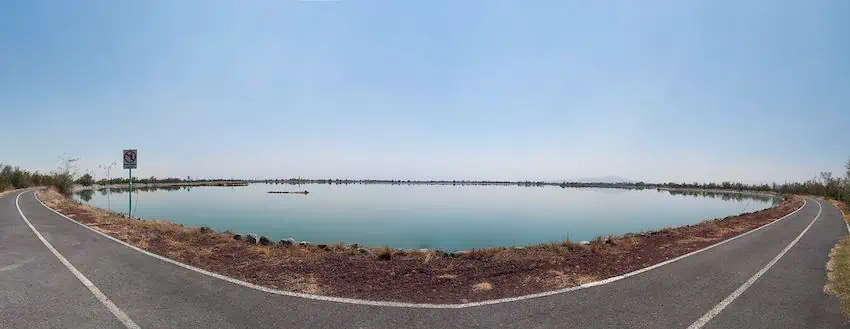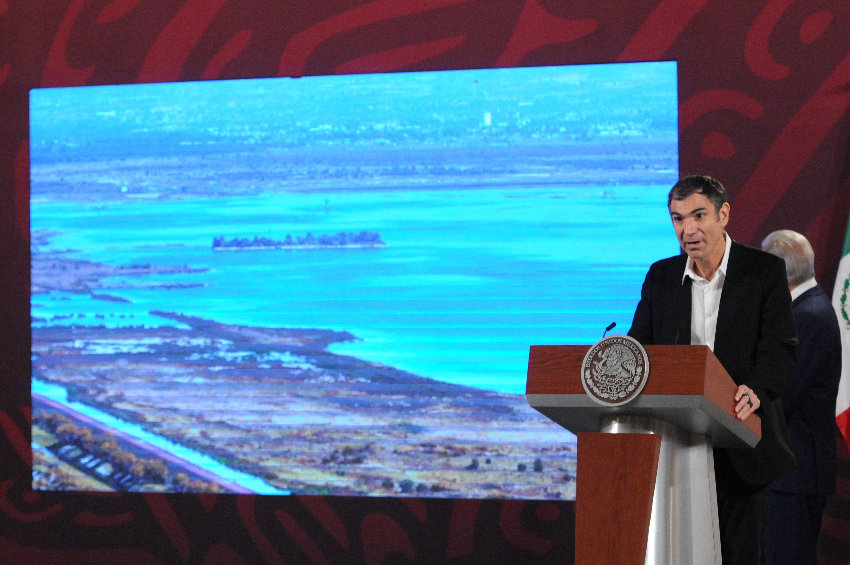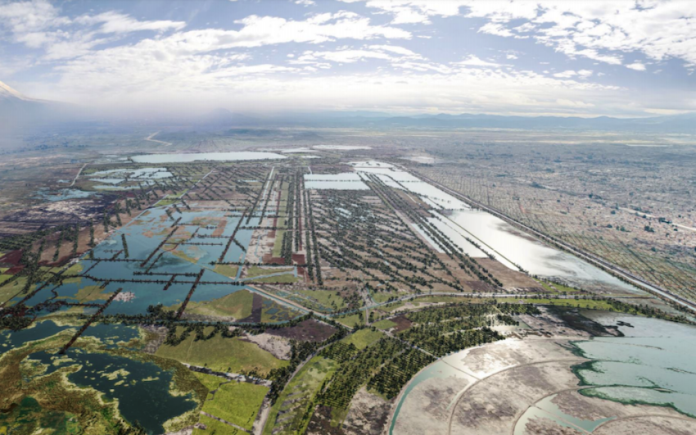President Andrés Manuel López Obrador spent Friday and Saturday visiting four municipalities in México State where work is underway to create a 14,000-hectare natural reserve on the site of the former Lake Texcoco.
México state Governor Delfina Gómez accompanied AMLO on his tour of Tecámac, Ecatepec, Chimalhuacán and Texcoco, where he made a speech celebrating progress on the massive ecological project.

“Today we evaluated progress in the recovery of Lake Texcoco,” AMLO said in a statement on social media. “Wetlands, rivers, bird lagoons and lands comprising more than 14,000 hectares have already become natural protected areas.”
Information from the National Water Commission indicates that the park is now 77% complete, has cost 4.9 billion pesos (US $280 million) and generated 6,100 jobs. It is expected to open in 2024.
During the tour, AMLO announced another addition to the Lake Texcoco project – a new university for medical students –known as the Benito Juárez García Universities for Well-Being (UBBJ) – that will form part of his administration’s educational initiative.
The UBBJ are public higher education institutes, generally located in marginalized areas where there are few tertiary education options. The new medical school will be the second university campus in Texcoco, alongside an existing civil engineering school

Besides the new university, AMLO said that the park would include sports fields for soccer, American football, baseball, basketball and the pre-Columbian ball game “pelota”; a skatepark; recreation areas; walking circuits; sustainable gardens and agricultural spaces; a restaurant; offices and scientific research areas.
The main component of the project, however, is the restoration of four water bodies that once formed part of the enormous lake that filled the Valley of Mexico, but were drained or dried out over the centuries following the Spanish conquest: Lake Nabor Carrillo; the Xalapango and North Texcoco Lagoons; the San Juan Ciénaga and Lake Texcoco. Historic wetlands and forests will also be restored.
The government predicts that this will generate a range of environmental benefits, including better regulation of water resources in the severely water-stressed Valley of Mexico, as well as health benefits for the local population.
The Lake Texcoco Ecological Park was originally designed by architect Iñaki Echeverría in 2010, but was sidelined four years later by former president Enrique Peña Nieto, who planned to build a new airport on the site at a projected cost of 169 billion pesos (US $9.6 billion) instead.

While running for office in 2018, AMLO claimed that the full cost of the airport could reach 285 billion pesos (US $16.2 billion) and campaigned to scrap the project and expand the existing Santa Lucía Military Air Base in nearby Zumpango.
In October of that year, a controversial referendum – in which less than 1% of eligible voters participated – backed AMLO plan. The Santa Lucía air base became the new Felipe Ángeles International Airport (AIFA), while the site of President Peña Nieto’s planned airport was given over to the “hydrological and social recovery of Lake Texcoco.”
With reports from La Jornada and Infobae
